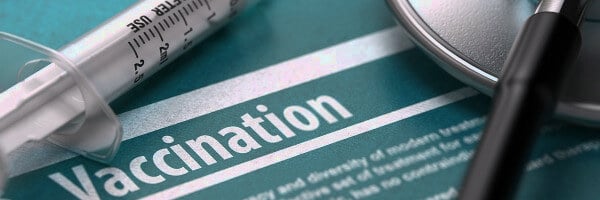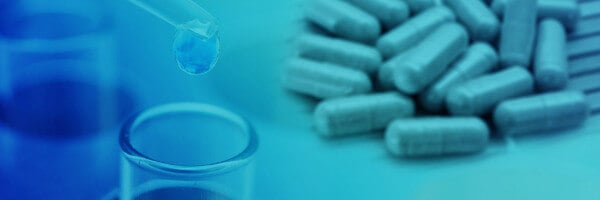(Translated by Google) Good service and kindness Edith is a very kind person (Original) Buena atención y amabilidad Edith es una persona muy amable
Read More
How Common is Tuberculosis (TB)?
Posted: May 29th, 2024 at 12:00AM

Tuberculosis (TB) used to be far more common in the United States and indeed still has a presence here and elsewhere in the world. If not treated promptly and properly, TB disease can be fatal. In this blog, we're talking about how many people in the US become infected with TB. We'll also talk about who might be at a higher risk of developing a TB infection, and more.
How Many People Become Infected With TB Disease?
Before we get into the numbers, we have a quick note on TB disease, which is a bacterial infection. There are two general types: active TB disease and latent TB infection.
In a latent tuberculosis infection, the individual doesn't display symptoms and their chest x-ray looks normal. In fact, people with latent TB might never actually experience TB disease.
However, there is still a risk that latent TB could escalate to active TB disease.
With active TB disease, the bacteria are quickly multiplying and damaging the lungs and possibly other organs of the body. The individual will likely display the signs and symptoms of TB, including coughing, chest pain, weight loss, and phlegm. Importantly, an individual with active tuberculosis can give it to others via infectious particles that spread through the air. This is why if someone has active TB, anyone they've been in close contact with will need to get tested as well. If left untreated, active TB can be fatal.
According to the American Lung Association, approximately 1.8 billion people (or 25%) in the world have tuberculosis disease. The majority of these individuals have a latent TB infection, specifically. However, worldwide, around 10 million people have active TB.
How about TB cases in the US specifically? The Centers for Disease Control and Prevention (CDC) says that in 2022, there were 8,331 reports of tuberculosis disease. In 2021, there were 7,874 TB cases. And in 2020, the US saw 7,163 tuberculosis cases.
How Many People Die From Tuberculosis?
Worldwide, about 1.3 million people died from TB in 2022. 167,000 of them were living with HIV (or human immunodeficiency virus), which you'll learn in a moment is a risk factor.
These numbers mean that TB is the second leading cause of death in terms of infectious disease, after COVID-19 but above HIV and AIDS.
What is Drug-Resistant TB?
Thankfully, most of the time, tuberculosis is treatable and curable. However, it must be addressed promptly by a healthcare provider.
Drug-resistant TB happens when the bacteria that causes tuberculosis becomes resistant to the drugs that providers use to treat TB. In other words, the drugs can't kill the bacteria. Drug resistance is especially concerning considering that the infected people can still spread the disease to others.
The World Health Organization (WHO) says that multidrug-resistant TB is a public health crisis and a "health security threat." Furthermore, in 2022, only about two in five people with drug-resistant TB accessed treatment.
Who is at an Increased Risk of Becoming Ill With TB?
Are certain individuals at a greater risk of acquiring a TB infection?
The World Health Organization says that individuals with diabetes or a weak immune system are more likely to develop tuberculosis. For example, people living with HIV or AIDS are more susceptible. But why? HIV attaches itself to white blood cells called CD4 T cells, which are vital parts of the immune system because they help to fight infections. However, HIV thinks that these cells are harmful and destroys them.
So, people with HIV have far fewer of these cells, and their bodies have a harder time defending themselves. Without a strong immune system, the body is simply more vulnerable to bacteria and viruses.
This is why sometimes, people living with HIV will eventually see it turn into AIDS — acquired immunodeficiency syndrome — which is the late stage of HIV.
Other groups of people are more susceptible to tuberculosis, as well. Those who are malnourished and individuals who use tobacco are at a higher risk of becoming infected with the TB bacteria.
Those with the highest risk of TB infection also include people who have immigrated to the US from areas with more TB cases, within the last five years, as well as people who live or work in high-risk environments, such as nursing homes, healthcare facilities, drug treatment facilities, homeless shelters, and prisons/correctional facilities.

Drug users, especially those who inject illicit substances, might also be at a greater risk of becoming infected with TB.
TB Prevention and Testing
Tuberculosis disease is still a threat — yes, even in the United States — making TB prevention a must. This is where TB skin testing comes in. This test can determine if you have an active or latent infection.
With the TB skin test, a provider injects tuberculin under the top layer of skin on the forearm. This causes a small, pale bump to form at the injection site. 48 to 72 hours later, the individual must return. If there's a hard, raised bump, it could indicate a TB infection either latent or active, prompting further testing for a diagnosis. If there's no reaction, then the individual has tested negative.
The Quantiferon blood test is another screening method for detecting tuberculosis exposure. It checks for the presence of TB bacteria. It requires only one visit and this TB blood test is unaffected by the BCG vaccine, unlike the skin test. Therefore, there's very little chance of a false-positive test result.
If you think you've been exposed to tuberculosis, or you live or work in a high-risk environment, speak with your healthcare provider about getting tested.

OMG, so e7 is one-of-a-kind in Vegas. My husband needed a TB Skin Test and I was able to book for the next hour. The staff actually answers the phone, right away. They are kind and nice. Upon arrival, at e7 Windmill location, the receptionist (who's name I do not have) was so kind, nice, and caring. She's a gem. During our brief wait for my husband's appointment, I witnessed the interaction between staff members and also, their clients. It's amazing that the entire, big e7 Team loves each other and what they do. You do not see this anywhere else. The team's interaction was magical. AND then how each staff member interacts with their patient, well... just unique. My husband had Alia, who definitely folded her Angel Wings in to fit in to the treatment room. What an amazing being. So patient, as my husband was on a walker and not so ambulatory. She explained all so clearly and easily. Truly, we have never experienced such CARE not just in Vegas, but anywhere. She also went above-and-beyond for us as to the next step. e7 scared me at first online, but now, they are my Go To and I have already recommended to many. God bless Alia and all. The Team truly LOVE what they do and it shows.
Read More

















